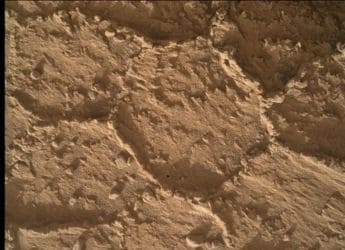- Home
- Science
- Science News
- Inventor of CorningWare Glass Passes Away at 99
Inventor of CorningWare Glass Passes Away at 99

S. Donald Stookey is no household name, but his best-known invention truly is: CorningWare, the durable, heat-resistant ceramic glass used since the 1950s to make millions upon millions of baked lasagnas, tuna casseroles and other potluck-dinner dishes.
The scientist, who died Tuesday at 99, created a type of glass so strong that the military used it in guided missile nose cones. His space-age material found a home in most American kitchens in the form of white dishes decorated with small blue flowers.
Stanley Donald Stookey died at an assisted living center in Rochester, New York, said his son Donald Stookey. He said his father broke a hip in a fall a few months ago and underwent surgery, but his health deteriorated.
"He was one of the great glass scientists in the history of the world," said Steve Feller, a physics professor at Coe College in Cedar Rapids, Iowa, where Stookey earned an undergraduate degree in chemistry and mathematics and remained active in alumni activities. "Virtually everyone has had CorningWare at some point in time, and there were all sorts of spinoff applications from his fantastic work."
CorningWare was celebrated for its versatility. It was strong enough to withstand minor kitchen mishaps, and it gave home cooks the ability to bake and serve food in the same dish. The dishes could go straight from the oven to the dinner table and then into the refrigerator or freezer.
You could also put them in a microwave, and some types could be heated atop a stove. They were a common sight at family gatherings, potlucks and holiday celebrations across the county.
Stookey joined Corning Glass Works in New York in 1940, the same year he graduated with a doctorate in physical chemistry from the Massachusetts Institute of Technology. He immersed himself in research, studying the complex chemistry of oxidation and its effects on glass, according to a company biography.
In 1952, he placed a plate of glass into an oven to heat it, but the oven malfunctioned. Instead of heating to 600 degrees Celsius (1,112 degrees Fahrenheit), the oven shot up to 900 degrees (1,652 degrees). Stookey expected to find a molten mess. Instead, he found an opaque, milky-white plate. Removing it from the oven, his tongs slipped, and the plate fell to the floor. But rather than shatter, it bounced.
He had discovered glass ceramics, which Corning patented as Pyroceram. By the end of the 1950s, the work led to CorningWare, one of the company's most successful product lines.
"He was fearless - the unknown never daunted him," said David Morse, Corning's chief technology officer. "He was an unassuming and quiet but tough person," whose numerous inventions generated big businesses for the company. "Don was recognized throughout the glass technology community as a world-class scientist."
In a 2011 interview, Stookey said he initially viewed glass research as a way to make money, but became intrigued by glass' special characteristics.
"I thought this might be a field where I could find something new, invent things not seen before, and I was lucky to have that be the case," he said in a video project funded by The History Channel for the Corning Museum of Glass.
CorningWare is still sold today, although it is now marketed by World Kitchen LLC, an Illinois-based company formed after Corning Inc. spun off its consumer-products division in 1998.
Stookey earned 60 U.S. patents. His other innovations included developing photosensitive glass that helped lead to color television picture tubes.
He received the National Medal of Technology from President Ronald Reagan in 1987. In 2010, at age 94, he was inducted into the National Inventors Hall of Fame.
"Half of his life was being a professional, well-known scientist, and the other half was fully being a father to three of us kids, a family man and a good husband," Stookey's son said. "He took us hunting and fishing and on vacations around the country and around the world."
Stookey was born in Hay Springs, Nebraska, on May 23, 1915. His family moved from Nebraska to Cedar Rapids when he was 6. He graduated from Coe College in 1936 before earning a master's degree in chemistry from Lafayette College in Easton, Pennsylvania, followed by the MIT doctorate.
Get your daily dose of tech news, reviews, and insights, in under 80 characters on Gadgets 360 Turbo. Connect with fellow tech lovers on our Forum. Follow us on X, Facebook, WhatsApp, Threads and Google News for instant updates. Catch all the action on our YouTube channel.
- Samsung Galaxy Unpacked 2025
- ChatGPT
- Redmi Note 14 Pro+
- iPhone 16
- Apple Vision Pro
- Oneplus 12
- OnePlus Nord CE 3 Lite 5G
- iPhone 13
- Xiaomi 14 Pro
- Oppo Find N3
- Tecno Spark Go (2023)
- Realme V30
- Best Phones Under 25000
- Samsung Galaxy S24 Series
- Cryptocurrency
- iQoo 12
- Samsung Galaxy S24 Ultra
- Giottus
- Samsung Galaxy Z Flip 5
- Apple 'Scary Fast'
- Housefull 5
- GoPro Hero 12 Black Review
- Invincible Season 2
- JioGlass
- HD Ready TV
- Laptop Under 50000
- Smartwatch Under 10000
- Latest Mobile Phones
- Compare Phones
- OnePlus 15R
- Realme Narzo 90x 5G
- Realme Narzo 90 5G
- Vivo S50 Pro Mini
- Vivo S50
- OPPO Reno 15c
- Redmi Note 15 5G
- Redmi Note 15 Pro 5G
- Asus ProArt P16
- MacBook Pro 14-inch (M5, 2025)
- Infinix Xpad Edge
- OnePlus Pad Go 2
- OnePlus Watch Lite
- Just Corseca Skywatch Pro
- Acerpure Nitro Z Series 100-inch QLED TV
- Samsung 43 Inch LED Ultra HD (4K) Smart TV (UA43UE81AFULXL)
- Asus ROG Ally
- Nintendo Switch Lite
- Haier 1.6 Ton 5 Star Inverter Split AC (HSU19G-MZAID5BN-INV)
- Haier 1.6 Ton 5 Star Inverter Split AC (HSU19G-MZAIM5BN-INV)












